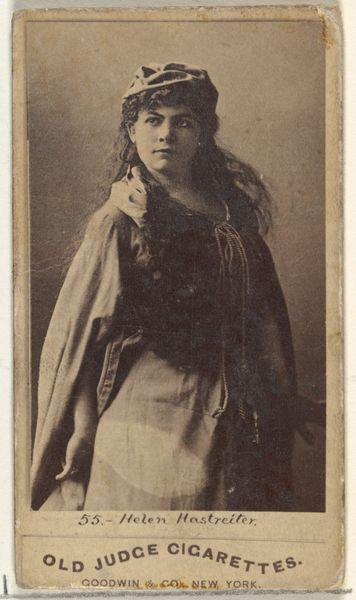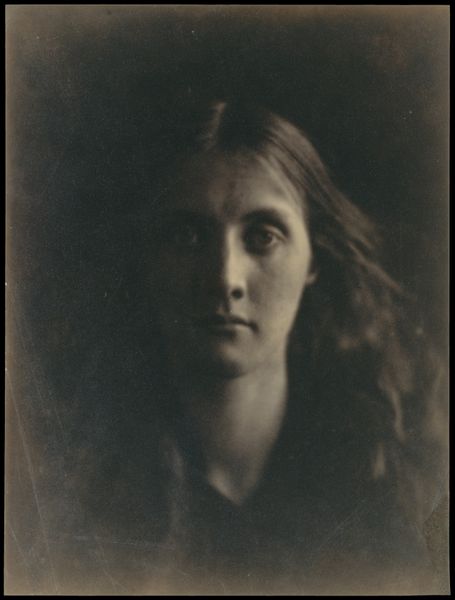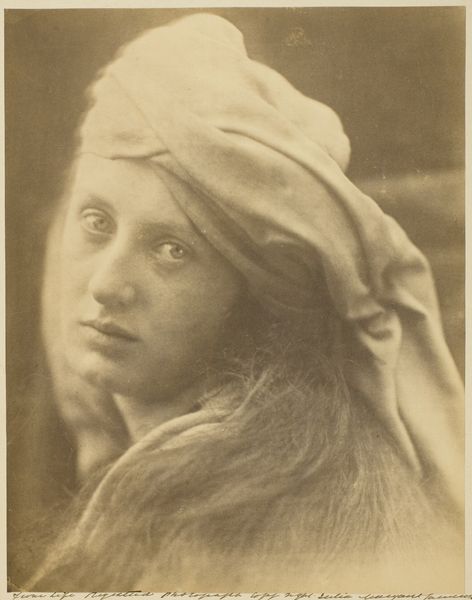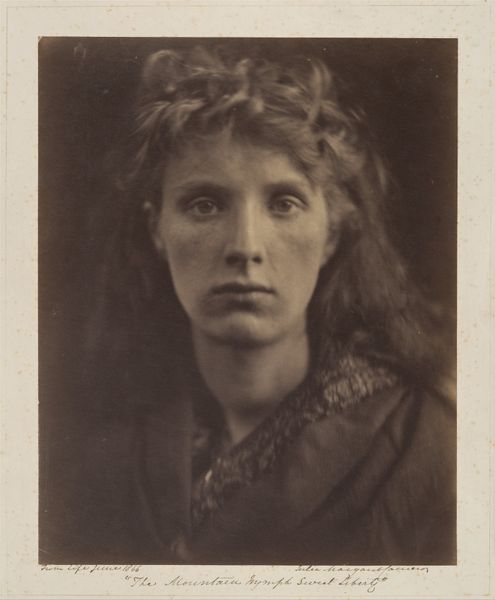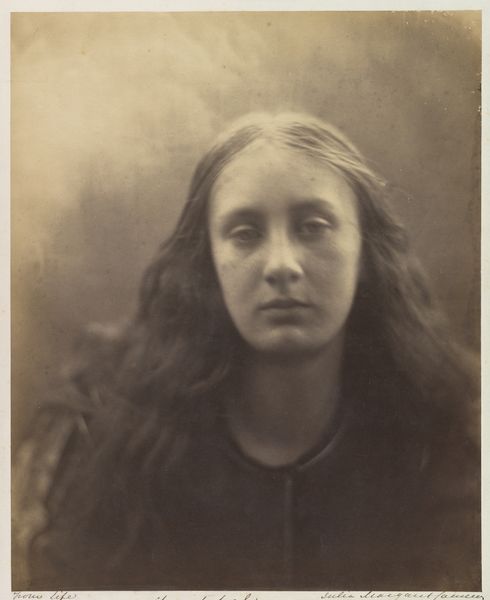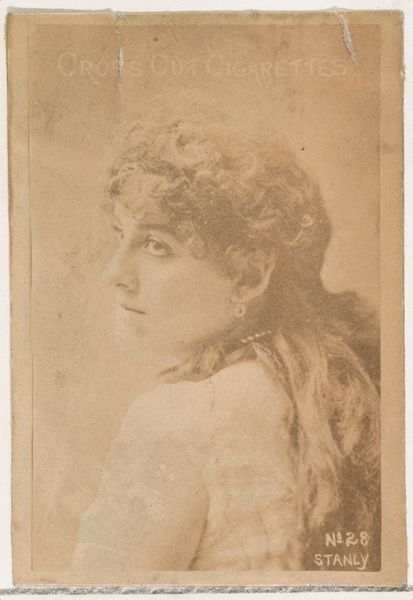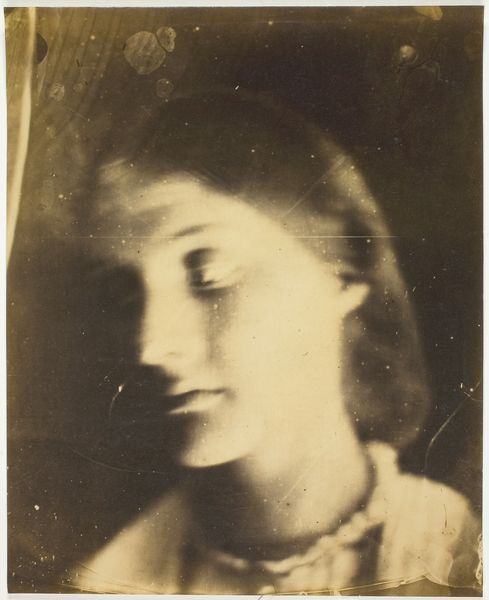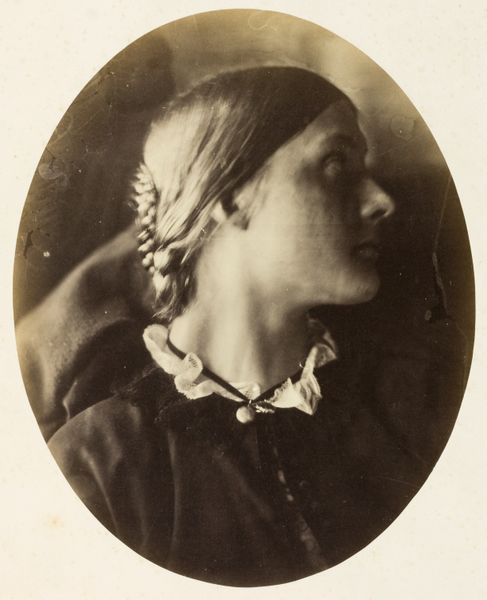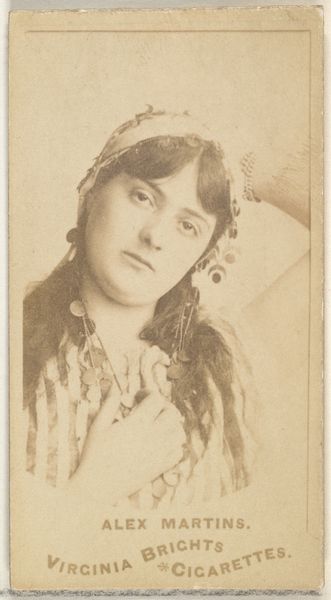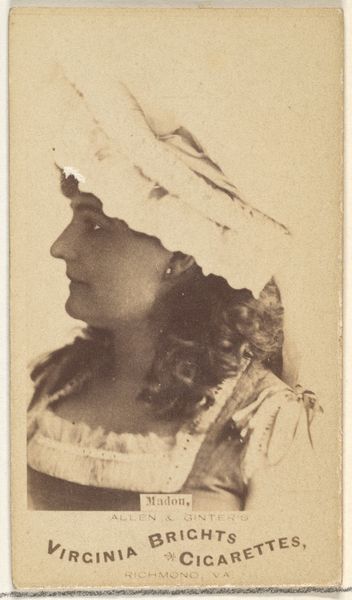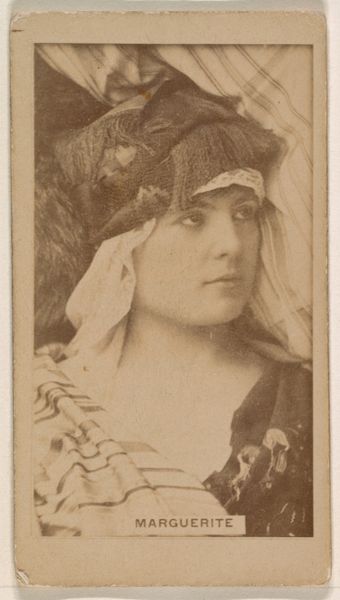![[Mary Ryan] by Julia Margaret Cameron](/_next/image?url=https%3A%2F%2Fd2w8kbdekdi1gv.cloudfront.net%2FeyJidWNrZXQiOiAiYXJ0ZXJhLWltYWdlcy1idWNrZXQiLCAia2V5IjogImFydHdvcmtzL2NiNmRlNmJlLWUwYjQtNDY2OS1hOWZlLTBmNjhjZTQ5Mjg0ZS9jYjZkZTZiZS1lMGI0LTQ2NjktYTlmZS0wZjY4Y2U0OTI4NGVfZnVsbC5qcGciLCAiZWRpdHMiOiB7InJlc2l6ZSI6IHsid2lkdGgiOiAxOTIwLCAiaGVpZ2h0IjogMTkyMCwgImZpdCI6ICJpbnNpZGUifX19&w=3840&q=75)
Dimensions: 33.1 x 24.7 cm (13 1/16 x 9 3/4 in. )
Copyright: Public Domain
Curator: Julia Margaret Cameron created this photograph, titled "[Mary Ryan]", circa 1865 to 1866. You can find it here in the Metropolitan Museum. Editor: The soft focus immediately pulls me in; there's a hazy, almost dreamlike quality. The tonal range is muted. It creates an introspective mood, wouldn't you say? Curator: Indeed. Cameron was interested in more than just a crisp, accurate representation. She used photography, especially portraiture, to access interior states of mind. We have to remember that Cameron was also deeply engaged with Pre-Raphaelite aesthetics and notions of beauty and the cultivation of these within a photographic salon setting. Editor: The Pre-Raphaelite influence is clear. It’s like she's posing Mary Ryan as a character in a romantic narrative, emphasizing feeling over photographic detail. Look how the light falls— or almost fails to, as it gently outlines her features and simple garment, drawing attention to her face, and eyes. Curator: Exactly, that’s what so compelling to audiences even today, how do you get the essence of the human soul through this technology that many saw as primarily documentary. It certainly gave her leeway amongst her peers within elite artistic and social circles, for bending convention. Her style of pictorialism certainly created an access for women and their representation behind, as well as in front of the camera lens. Editor: And you can see Cameron using photography almost as if it were paint. The imprecision is almost deliberate. It creates this lovely textured quality. Curator: Very true. Even the dark spots that some viewers would describe as defects; that all contributes to an aesthetic of a work in progress, as if the artistic impulse, and less precision and technicality are most important. Editor: For me, this piece is deeply emotional, and all the more because it doesn't offer up some idealized version of beauty. What about you, what lingers for you about the work? Curator: What stands out is the role of intimate circles, who support the rise and creation of important artists throughout history, and that we might not be here having this conversation, if it weren't for these supportive, but critical art-focused salon settings.
Comments
No comments
Be the first to comment and join the conversation on the ultimate creative platform.
